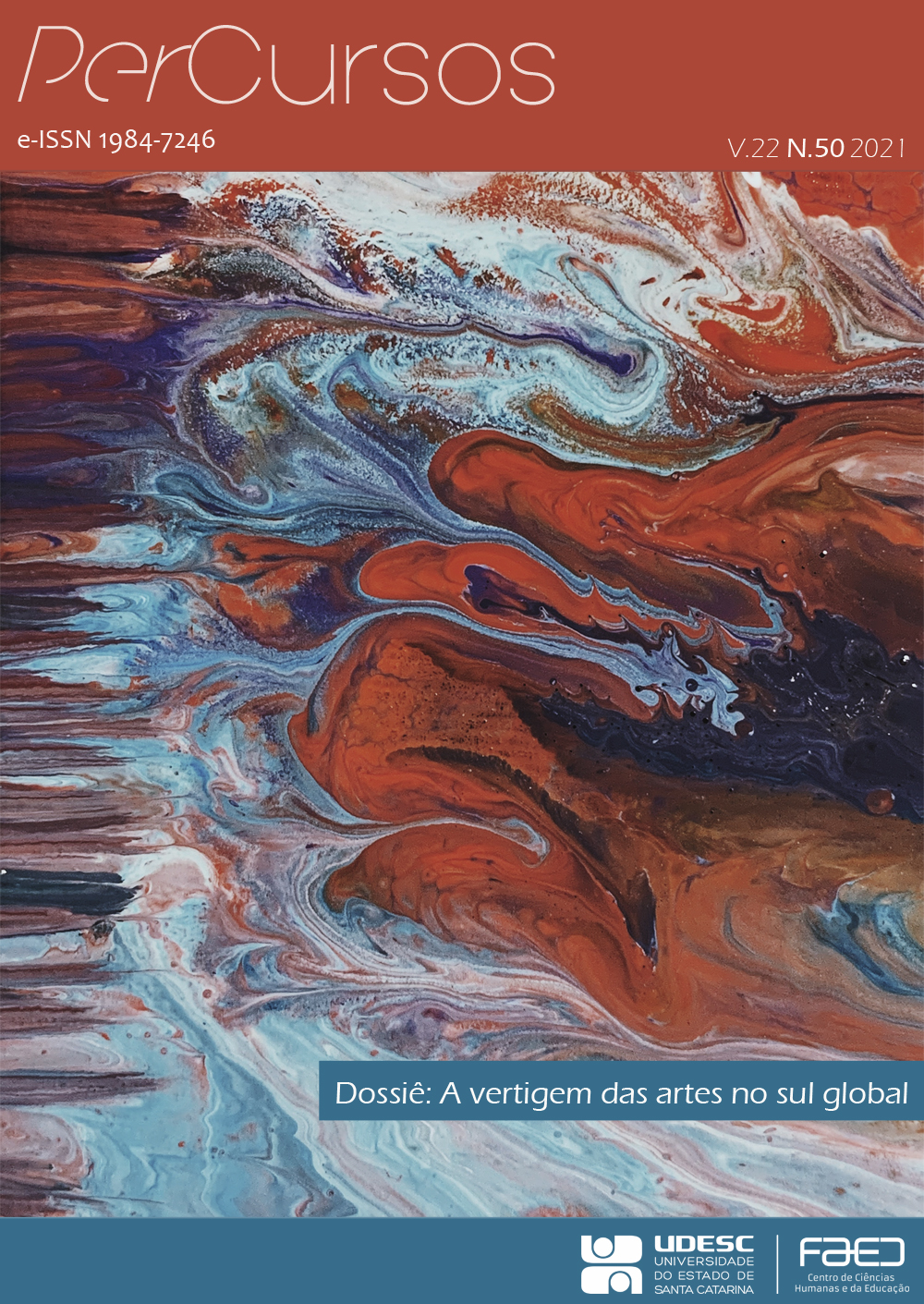Can the female artist speak? Helena Almeida’s experience by the Listen to me series (1978-1980)
DOI:
https://doi.org/10.5965/1984724622502021197Keywords:
feminism, Helena Almeida, gender, ideologyAbstract
This article some works in the series “Listen to me” by the Portuguese artist Helena Almeida (1934-2018), based on a theoretical reflection that brings together feminism and Marxism. Therefore, the analytical categories of gender (LAURETIS, 1987), ideology (HADJINICOLAOU, 1980), and experience (SPIVAK, 2010) are mobilized in the analysis of the paths taken by the artist during the 60s and 70s. Through her artistic practice, in which the body is a key element, she observes, thinks, registers and criticizes the social and cultural environment to which it was inserted.
Downloads
References
ALMEIDA, Helena. [Entrevista concedida a] Helena Vasconcelos. Storm Magazine, 23 jun. 2008. Disponível em: http://gfilomenasoares.com/Content/Files/Noticias/Press_ antigo/8_Storm_Maga zine.pdf. Acesso em: 30 jan. 2020.
ALMEIDA, Helena. Ouve-me. In: CENTRO DE ARTE MODERNA GULBENKIAN. Lisboa: Centro De Arte Moderna Gulbenkian, [20--]. Disponível em: https://gulbenkian.pt /cam/works_cam/ouve-me-145250/. Acesso em: 01 out. 2020.
ALMEIDA, Marta Moreira de; Ribas, João. Helena Almeida: a minha obra é o meu corpo, o meu corpo é a minha obra. Porto: Fundação de Serralves; Paris: Jeu de Paume, Bruxelas: WIELS, 2015.
ARGAN, Giulio Carlo. Arte Moderna. São Paulo: Companhia das Letras, 2010.
BENJAMIN, Walter. Obras escolhidas: magia e técnica, arte e política: ensaios sobre literatura e história da cultura. São Paulo: Brasiliense, 1987. v. 1.
BOURDIEU, Pierre. A Economia das Trocas Simbólicas. São Paulo: Perspectiva, 2013.
GOMES, Filipa; RODRIGUES, Cristiana; MENDONÇA, Ricardo. Helena Almeida: Era uma vez uma mulher sem sombra que encontrou uma. Monografia. Faculdade de Belas Artes: Universidade de Lisboa, 2006.
GUIMARÃES, Patrícia. Sistemas de Arte e o lugar da História. In: ENCONTRO NACIONAL ANPAP, 22., 2013, Belém. Anais [...]. Belém: Ecossistemas Estéticos, 2013. p. 2033-2041.
HADJINICOLAOU, Nicos. Historia del arte y lucha de clases. Madri: Siglo Veintiuno Editores, 1980.
LAURETIS, Tereza de. A tecnologia do gênero. Indiana: Indiana University Press, 1987.
MARX, Karl; ENGELS, Friederich. Manifesto do Partido Comunista. São Paulo: LP&M Editora, 2001.
MIRA, Rita. Helena Almeida: a minha obra é o meu corpo, o meu corpo é a minha obra. In: FACES DE EVA: estudos sobre a mulher. Lisboa, n. 35, 2012. p. 221-224.
MORAIS, Paula. Portugal sob a égide da ditadura: o rosto metamorfoseado das palavras. Lisboa: Chiado Editora, 2014.
NOCHLIN, Linda. Por que não houve grandes mulheres artistas? São Paulo: Edições Aurora, 2016.
OLIVEIRA, Márcia. Arte e feminismo em Portugal no contexto pós-revolucionário. Ribeirão: Edições Húmus, 2015.
POLLOCK, Griselda. Vision and difference: feminism, femininity and histories of art. London: Routledge Classic Editions, 2008.
SPIVAK, Gayatri Chakravorty. Pode o subalterno falar? Belo Horizonte: Editora UFMG, 2010.
WOOLF, Virgínia. Um teto todo seu. São Paulo: Tordesilhas, 2014.
Downloads
Published
How to Cite
Issue
Section
License
Copyright (c) 2021 PerCursos

This work is licensed under a Creative Commons Attribution-NonCommercial-NoDerivatives 4.0 International License.


